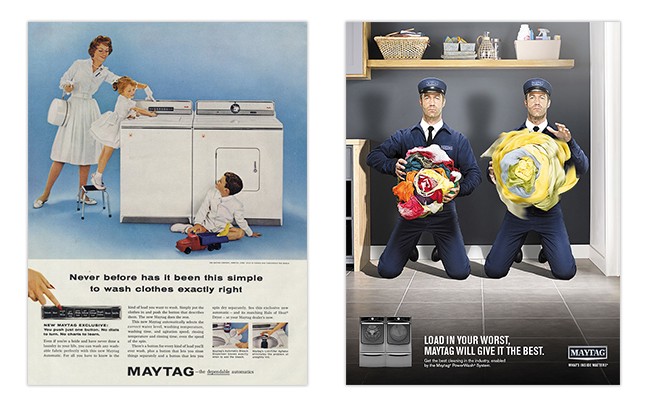What is Storytelling?
“Storytelling marketing” refers to the use of building a story to convey a brand’s overall campaign message. The goal of the storyline is to make the spectator feel something that will motivate them to act on your brand’s call to action. For example, using an inspiring fitness success story to get viewers to sign up for workout classes. Storytelling is a great way to boost your brand’s awareness and increase your return on investment.
In marketing, whether print or digital, the goal of storytelling is to help customers understand why they should care about a product or service in a way that makes your brand feel more personal. According to Marketsmiths.com, “Storytelling drives conversions and ROI…According to research by Headstream, if people love a brand story, 55% are more likely to buy the product in future, 44% will share the story, and 15% will buy the product immediately.”
In this blog post, we will discuss some of the advantages of storytelling with print and how best to use storytelling to boost your brand’s awareness.

Print Media and The Power of Storytelling
Stories provide us with the chance to step out of our own lives and learn about history, imagine the possibilities of the future, and release our creativity in ways we’ve never experienced before. There is power in the ability to share a story that affects readers in ways that other forms of communication cannot. Just think of the success that comes from tv shows, emotional commercials, hilarious billboards, and classic novels!
Print dates back hundreds of years as one of the top forms of communications used to tell stories and inform others. Despite the development of digital media, print remains a constant in our everyday life. It holds a variety of advantages that come from using paper as the medium to share a brand’s message.
If a brand wants to make a real mark on their consumer, they need to be authentic and trustworthy but most importantly – compelling. Especially at a time when the digital ad world has numbed users to any kind of social media advertisement, pop up, or email blasts.
Fortunately, the print format offers an edge over digital because it avoids these interruptions. Print allows readers to remove themselves from distractions in comparison to digital. Readers won’t experience random pop-ups or “Hey, Subscribe Now to Continue Viewing!” This may be why 70% of customers believe direct mail is more personal than online advertisements.
Due to web oversaturation, consumers spend less time on digital material, which means that online content creators only have a few seconds to capture users’ attention and communicate their brand’s message to their target audience. However, with print, creators can use storytelling in print advertisements, advertorials, catalogs, brochures, postcards, or even posters to capture the attention of onlookers without worrying about running out of time.

Source: Maytag, Medium.com
The format we use to tell a story is now almost as significant as the story itself. With print, whether it’s a magazine, publication, or postcard, the reader can focus more intently on the message being shared by the brand.
According to Mansi Media, 92% of 18- to 23-year-olds say reading and digesting print material is easier than digital content. 80% of consumers act on direct mail print advertisements. And 77% of consumers say print drives higher recall levels. Those are great statistics to keep in mind when wanting to share a story with your audience via print.
Because of the tangibility of printed content, readers have a more intimate experience with it. Print marketing tools, such as direct mail or magazines, have the advantage of being tangible objects that can be held, distributed, shared, and shelved. Print leaves long-lasting impressions on its readers and provides better memory recall because it stimulates some of the senses that digital media does not. When pairing this with storytelling, you boost your brand’s chances of boosting ROI and conversions because your story can become evergreen and be reachable at any given point.

5 Ways to Use Storytelling to Boost Your Brand’s Awareness
- Showcase a story that shows your brand’s understanding of the human nature of your target audience.
- Create a story that resonates with your customers and motivates them to take action. Choose whether to center your campaign’s story around your service, your product, or your customer.
- Use storytelling on a print medium to share a customer’s success story via direct mail marketing.
- Use a QR code on a direct mail piece to drive customers to an interactive augmented reality that communicates your brand’s narrative.
- Make use of visually impressive graphics and designs in print ads that creatively tell a story of how your product or service benefits your recipient’s life.
Start With A Story
A captivating storyline is essential when using storytelling to convey your brand’s messaging.
Some of the top brands, like McDonald’s, Frank’s Red Hot and Pringles, elicit empathy or some type of emotion from their audience using their product, service, or company in a creative way. With just an image or witty tagline they can convey a story that inspires emotion and influences their customers to act.

That is the goal of storytelling – you’re sharing the possibility that your product or service can help improve the life of your recipient. For example, use storytelling to inspire your customers to use your products or services by getting them involved. Call to actions don’t need to be simple like earning reward points or loyalty memberships, they can be more complex like bettering oneself by signing up for your brand’s workout program or learning about their ancestry from your brand’s DNA kit. Getting customers involved by sharing their own stories is also a great way to make an impact on your consumer base.
How Design Can Help Tell Your Brand’s Story
The design for building a compelling narrative for your brand might take a professional designer. However, we still want to provide you with a few great starting points. Your brand will want to make use of visually impressive graphics and designs to really tell its story.
For example, advertorials are an innovative way to capture your target audience’s attention using print ads. They blend into your publication and allow the reader to become aware of the brand without feeling forced.
What is the most important message you want to convey to your audience? What do you want your customers to take away from your campaign?
Begin with an understanding of the human nature of your target audience and an objective of how your company can successfully reach them. Choose whether to center your campaign’s message around your company, your product, or your customer. Create a story that resonates with your customers and motivates them to take action.
Here are some general guidelines:
- First, like any campaign, you’ll want to define your goal and your call to action.
- Next, create a story-like image or message that offers a solution to your target audience’s needs.
- Then, pick the right format (postcard, booklet, small publication, etc) for your print campaign.
- Get creative with your storyline! Personalize your mail piece with your customers’ names, images, wants and needs to grab their attention and will get them involved in the idea you want to portray.
- After your vision and creative copy comes to life, there is a very important next step to the print marketing design process. Paper stock, paper finishes, and paper weight.
The type of paper you use is just as crucial as the actual design of your print marketing piece. Print marketing tools are representative of the products and/or services that businesses provide to their customers.
Coordinating your paper stock and design will help elevate the final impression that your print marketing piece will leave on its recipient. The team at Solo Printing can help you answer any questions you have regarding your next print project. Just use the contact form below.
Targeting The Right Audience for Your Story
You’ll want to develop a story that includes your age demographic. A design that includes what’s familiar and relevant to them at this stage of their life and how your product or service can benefit them at this time.
Print advertising is actually a very successful strategy for engaging the 18–24-year-old demographic.
Brands tend to overlook the younger age demographic’s perspective on the print format of advertising because they think they are more prone to the digital medium. However, it’s found that 68% of consumers ages 18–24 react positively to advertisements in print publications (emarketer).
This is worth noting because due to the current privacy changes across Apple and Facebook and other ad blocker platforms, the younger age demographic has become increasingly difficult to reach. According to eMarketer, 63% use AdBlocker and 82% ignore online banner ads.
Storytelling: Augmented Reality with Print
Print has several advantages that the digital world cannot match, such as the power that comes with having a physical object. However, if you still want to incorporate a digital aspect to your print campaign, QR codes make it easy and very interactive.
Augmented reality can be used to engage your recipients and showcase your brand’s story in a whole new way. Although them to feel like they are part of the narrative. Or you can create video content that the reader can view by scanning the QR code on their direct mail postcard.

Print Marketing with Solo
The options for print storytelling are endless! Use the power of storytelling to your brand’s advantage. From personalized pieces to holiday promotions, print marketing is an excellent approach to improve how your clients see and feel about your company.
Get started with Solo Printing today. Submit a form below!



